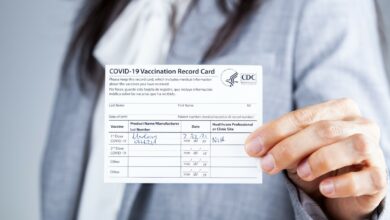A
A
A
On March 27, 2020, Congress passed and President Donald Trump signed into law the bipartisan Coronavirus Aid, Relief, and Economic Security (CARES) Act, designed to stabilize and stimulate the American economy as it reeled from the effects of the COVID-19 pandemic, help every family better preserve its finances and health. Among the provisions of the CARES ACT is authorization for 80 million Americans to receive from the government a direct stimulus payment starting the week of April 13. The Economic Impact Payments (EIP) amounted to $1,200 for individual adults, $2,400 for married couples who file taxes jointly, and an additional $500 for each dependent child under the age of 17.
Who qualifies for an EIP? U.S. citizens and resident aliens who filed their taxes in 2018 or 2019, have a work-eligible Social Security number, cannot be claimed as a dependent on someone else’s tax return, and have a gross adjusted income of $75,000 ($112,500 for heads of households and $150,000 for married couples who file taxes jointly) should receive their EIP automatically. For every $100 over that amount, the EIP is reduced by $5. Anyone making over $99,000 ($136,500 for heads of households and $198,000 for joint filers) is ineligible for the EIP. (If in 2020 your income falls below the eligible threshold, you will be able to claim it as a credit on your 2020 tax return.) Others who automatically qualify for the EIP are people who received Social Security Retirement payments in 2019, disability (SSDI) or survivor payments in 2019, Railroad Retiree benefits in 2019, or other forms of veterans’ retirement, disability, or survivor benefits.
Read More »
When are EIP being made? Anyone who has paid their 2019 tax or received their 2019 tax refund via direct deposit should have received their EIP by April 17. Everyone else will receive a paper check in the mail starting April 24, with the IRS issuing the checks based on income-level (lower earners should receive their checks before higher earners). According to the IRS, it could take months for checks to arrive in some locations, and anyone who has moved since the last time they filed taxes must update their address on file with the IRS. Individuals who did not file a return in 2018 or 2019 because they earned less than $12,200 ($24,400 for joint filers), must use the IRS’s Non-Filers tool to request their EIP. Within 14 to 20 days of the EIP being issued, the recipient will receive a letter from the IRS detailing how the EIP was made and how to contact the IRS if the money was not received.
How can I look into the status of my EIP? The IRS has set up an online “Get My Payment” App to look into EIP status, confirm EIP type (by mail or direct deposit), and enter bank account information to set up direct deposit. To use the tool, you will need your 2019 tax return (if filed already) and your 2018 tax return. (EIP information for individuals who received an SSA or RRB Form 1099 or SSI or VA benefits is not yet available on the IRS’s form.)
What should I do if I did not receive an EIP? Someone who has not yet received their EIP should first determine whether they should have received a direct deposit or whether they should be receiving their EIP in the mail. If waiting on EIP by mail, users can consult the online tool to verify if it will be sent or when it will be sent. If waiting on direct deposit, users should verify that they qualify for the EIP (see above) and that the IRS has their correct banking information on file by using the online tool.
If using the online tool results in a “Status Not Available” message, there could be several explanations depending on your particular situation. For those who have filed a tax return but receive a “Status Not Available” message, the IRS may not have completed processing their return or adding their information to the online tool. For those who do not have to file a tax return but who have used the IRS’s non-filers tool, a “Status Not Available” message may indicate that the IRS has not yet processed all of their information.
Users should note that the IRS updates its EIP information at midnight each day, so they only need to consult the online tool once per day. In some instances, users of the online tool might be confronted with an error message reading “Please Try Again”. This indicates that the account has been locked and the user must wait twenty four hours before trying to log in again.
Be aware that if you are waiting to receive EIP by mail, the process of issuing and distributing the checks means that it may take a few months for the EIP to reach you. Remember that, given the current pandemic, the IRS has very limited support staff able to answer the phones. Similarly, lower staffing levels currently means that 2019 tax filings will take longer to process and this, too, could delay the release of EIP checks or direct deposits.






